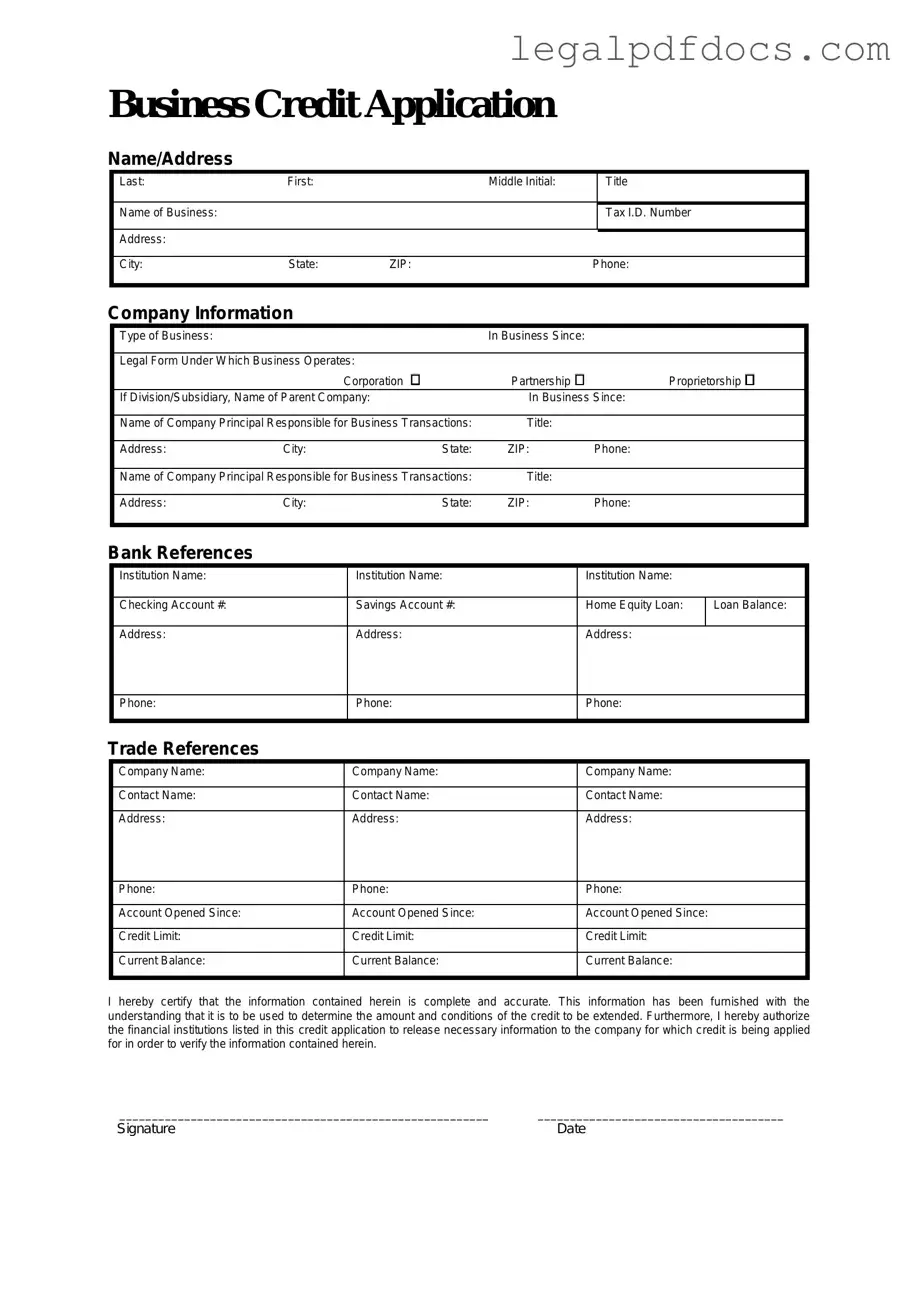Fill Out a Valid Business Credit Application Template
A Business Credit Application form is a document used by companies to request credit from suppliers or lenders. This form collects essential information about the business's financial status, credit history, and ownership details. Completing this form accurately can significantly impact your ability to secure favorable credit terms, so make sure to fill it out carefully by clicking the button below.
Open Business Credit Application Editor Here
